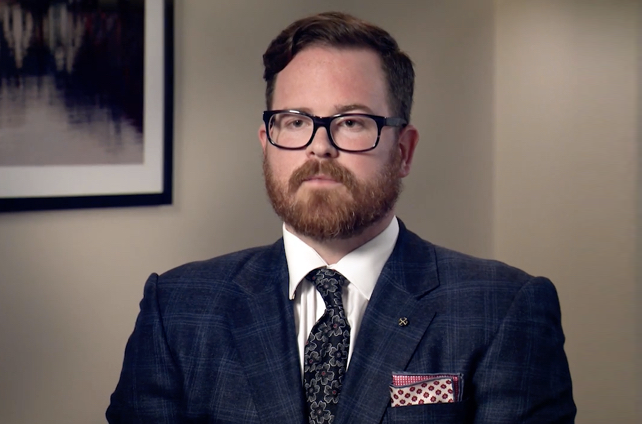Your client's home may be insured for loss based on the market value of the home, but is that the actual cost to replace the home if they need to rebuild? What if the home's market value is less than the rebuild costs? It happens. Also, there are a few insurers who offer replacement cost without a cap.
Legacies, Protected.
Your trust and estate expertise ensures your clients’ legacies are intact for generations. Guide them—and their families—through the complexities of property and casualty insurance.

In their own words: the value of working with experts
This property and casualty agent and trust and estate attorney consistently work with the same clients. Watch their story to see how and why.


Over a third of financially successful clients expect their advisors to be proactive.*

Why you need a holistic view of risk

Proactive coverage wins the game
*“The Value of Premium Wealth Management” CFA Institute, 2017
Understand risk
Get a quick understanding of important key facts to help you and your clients put property and casualty risk into real-world perspective.
62%
of individuals with investible assets of $5M or more served on volunteer boards and 5% lacked directors & officers insurance.*
40%
of financially successful households have less than $5M in umbrella liability coverage.**
60%
of homes in the U.S. are undervalued for insurance.†
$153 billion
annual estimated underinsured property loss.††
33%
of kids between 12-17 have been cyberbullied and 12% have admitted to cyberbullying others.‡
1 in 8
drivers are uninsured.‡‡
Sources: * Chubb Survey, 2011 • ** Ace Private Risk Services (2012) • † Marshall & Swift/Boeckh (2013) • †† Swiss RE (2015) • ‡ Cyberbulling Research Center (2016) • ‡‡ Insurance Information Institute (2012)
Real examples of risk*
Valuation goes hand-in-hand with replacement cost coverage because the insurer won't offer replacement cost unless the home is insured to value. Look for an insurer that conducts a complete, interior or exterior appraisal of a home, instead of using a formula. This delivers the best, most precise extimate of replacement cost. Since most companies have capped replacement cost, if the formula has too low a number this means out-of-pocket costs.
Replacement cost is the full cost to replace a covered item at today's prices and without depreciation. An actual cash value settlement basis means that the insurer calculates depreciation and reimburses the policyholder only for the depreciated value of the items. So if the policyholder's home has a power surge and their 100" projection television is fried, they could be paid out the full cost to replace the TV—or could be given the amount that the TV would fo for on the market. Many companies will pay actual cash value, but only after the personal property is replaced or repaired—which means the upfront costs are out-of-pocket for your clients.
Additional living expenses, or as it's called in the industry, Loss of Use, comes into play when a home incurs a covered loss that makes the home inhabitable while it is being repaired. The coverage provides lodging, meals, and reimbursement for any other applicable daily living expenses beyond what the client pays normally. Additional living expenses can add up quickly, particularly in a situation where a home is being rebuilt after a significant covered loss. Look for coverage that allows policyholders to stay comfortable and maintain their standard of living such as in a comparable home in the same school district.
Another big-ticket item is a coverage called rebuilding to code, or Law and Ordinance coverage, which pays for the cost of complying with new or changing building codes following a covered loss. For example: When rebuilding a 75-year-old home that suffered substantial loss due to a fire, contractors find that the cost of rebuilding the home to code will be an additional $100,000. Look to see if the law and ordinance coverage limit is adequate. If the law and ordinance coverage limit is adequate in the insurance policy, that cost would be covered.
When a home incurs a loss from wind, fire, or another peril, there can be a significant amount of debris that needs to be removed, and it can cost thousands and thousands of collars to clean up a property after a significant loss. Debris removal is a coverage your clients should have on their policy, and they should know how much they have.
A homeowner's policy covers personal property. But all homeowner's policies contain "special limits," which are sub-limits for specific types of valuable items. For instance, the standard special limit in many policies is $1,000 to $5,000 depending on the state. That means the insurer will pay a maximum of $1,000 to $5,000 per item for jewelry, subject to the deductible—but the value of key pieces like engagement rings often exceeds the limit. Some insurers offer higher special limits to allow more coverage for valuable items in the homeowner contract subject to the deductible.
Even with higher special limits, a valuable articles policy is often appropriate, particularly for collectors. A valuable articles policy specifically insurers valuable items and does so with itemized coverage and no deductible. These policies generally offer "itemized coverage," which insures individual items, or "blanket coverage," which protects collections under one blanket item subject to a per-item limit. A comprehensive insurer will offer both types of coverage and offer protection by increasing the values to keep pace with inflation.
There are three settlement basis options in the automobile insurance market: stated amount, actual cost value (ACV), and agreed value. Stated amount lets the insurance company pay the lesser of two amounts, the stated amount on the policy or the ACV. An ACV settlement basis pays the depreciated value of the vehicle, applying the deductible, leaving policyohlders with a shortfall. The best option is a settlement basis Chubb called agreed value, offered by only a few insurers. It states the value of the automobile on the insurance policy and at the time of the covered total loss, the insured receives the amount on the policy—no deductions for depreciations, no deductible applied.
Successful clients have unique liability needs, due to frequent travel, vulnerability to lawsuits, and positions on boards. An excess policy should include worldwide coverage that covers the person no matter where they travel—whether a few miles down the road or to another country. Personal injury includes bodily injury but also extends to "pain and suffering" claims, including shock, mental anguish, libel, and other categories of liability. A thorough liability coverage policy should include personal injury. Directors and Officers liability coverage applies to members of a nonprofit, corporate, or other boards, and protects the policyholder from liability of damages allegedly caused by their acts or omissions as a board member.
This is an individual decision based on a combination of factors. Essentially, the question is, "How much does the individual have to lose?" If a client is involved in a lawsuit, her or his entire net worth and even future earnings can be targeted. Specific considerations include:
- Value of physical assets, including residences, collections of jewelry or art, personal property, etc.
- Investable assets that an individual posesses
- The individual's future earnings
- Inheritances and family money
- Legal environment—does the individual live in a state or county where jury awards tend to be higher than average?
- Whether the individual has an occupation or lifestyle that increases liability risk
A combination of these factors will help clients arrive at the right liability coverage for their situation.
